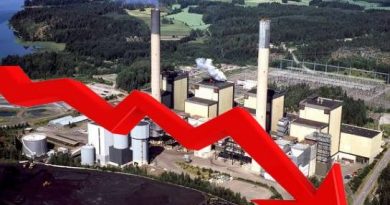Low Carbon Cement, Green Hydrogen Among WEF’s Top Emerging Technologies of 2020
 Aviation will need more innovation to become Greener
Aviation will need more innovation to become Greener
In a report released in November 2020, (Top 10 Emerging Technologies of 2020) by the WEF, 10 technologies have been highlighted for their potential, out of a pool of 75 nominations. Interestingly, four out of the top ten emerging technologies have some green credentials. These four technologies are- Sun-Powered Chemistry, Electric Aviation, Lower-Carbon Cement, and Green Hydrogen. The interesting bit is that the WEF expects these technologies to start making an impact in the next 3-5 years, a very close timeframe by the standards of emerging technologies.
Sun-Powered Chemistry or chemical production using sunlight is a new approach to the manufacturing of chemicals important to human health and comfort while cutting down fossil fuel use. Conventionally, the manufacturing of chemicals contributes to extractive processes, carbon dioxide emissions, and climate change. But, this new technique, uses sunlight to convert waste carbon dioxide into these needed chemicals, likely reducing CO2 emissions in two ways – by using the unwanted gas as raw material, and sunlight as the source of energy needed for production, not fossil fuels.
Electric Aviation or Electric Airplanes is an exciting area, since air travel accounts for 2.5 percent of global carbon emissions. A transition to electric aviation could reduce fuel costs by up to 90%, maintenance by up to 50%, and noise by nearly 70%.
Though still at an early stage, and being tried on smaller planes yet, this is very promising. Success will depend on both reducing battery costs and improving energy density of batteries. Electric motors generally have longer life spans than the hydrocarbon-fueled engines in current aircraft. Currently, about 170 electric airplane projects are under development.
Lower-Carbon Cement or a variety of lower-carbon approaches are being experimented with, while some are already in practice. A start-up Solidia in Piscataway, New Jersey, is employing a chemical process licensed from Rutgers University that has cut 30% of the carbon dioxide emission in making cement. This technique uses more clay, less limestone, and less heat than typical processes.
According to a report by Chatham House in London, around 8% of the total global amount of human-produced carbon dioxide is released by the manufacturing of cement. The process, besides being energy intensive, is also a high emitter due to use of extracted materials and large volumes.
Which brings us to the fourth technology in focus.
Green Hydrogen is produced through electrolysis, in which machines split water into hydrogen and oxygen, with no other by-products. Companies are working to develop electrolyzers that can yield green hydrogen as cheaply as grey or blue hydrogen, and analysts expect them to reach that goal in the next decade. That would mean electrolysers powered completely by renewable energy, to earn the green tag. The traditional process of producing hydrogen, in which fossil fuels are exposed to steam, is called grey hydrogen and if the CO2 is captured and separated, it is called blue hydrogen.




